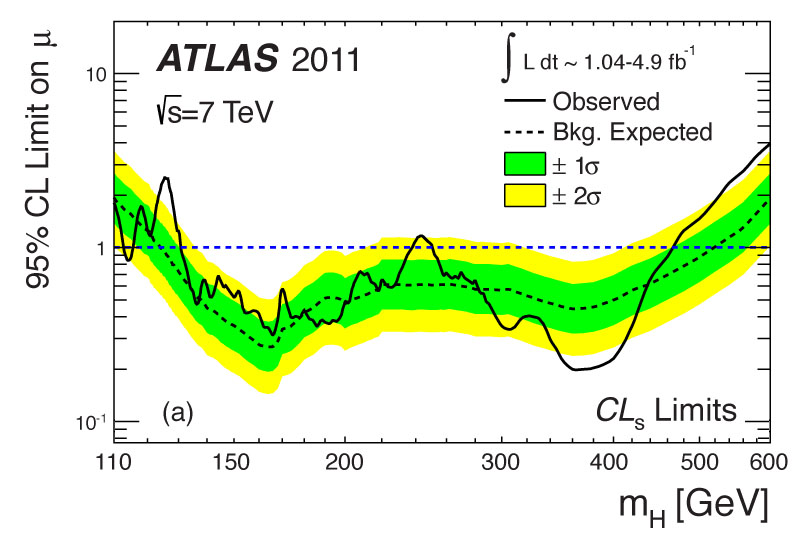Higgs search papers submitted for publication
7 February 2012 | By

The results on Standard Model (SM) Higgs searches that ATLAS reported at a CERN seminar on December 13, 2011, have now been submitted for publication in three papers.
The Higgs Boson is predicted to decay into several different combinations of particles, called decay channels. Two of the papers report on searches, performed with the full data sample from 2010 and 2011, in the Higgs decay channels that result in either two photons or four leptons in the final state. These are the channels that are presently most sensitive in the low mass range where a SM Higgs is most expected to appear. The third paper reports on the combination of the results from these two channels with those from other channels to provide a more sensitive search, extending over a larger mass range. This last paper was submitted simultaneously with a similar paper from the CMS experiment. The results of the analyses documented in the papers are essentially unchanged from those presented at the seminar, and the overall conclusion also remains the same. If the SM Higgs exists, it is most likely to have a mass in the range 116-131 GeV; moreover, despite tantalizing hints in the region of 126 GeV, more data is needed to resolve whether or not the SM Higgs exists. The requisite data should be available by the end of the 2012 LHC proton-proton run.


